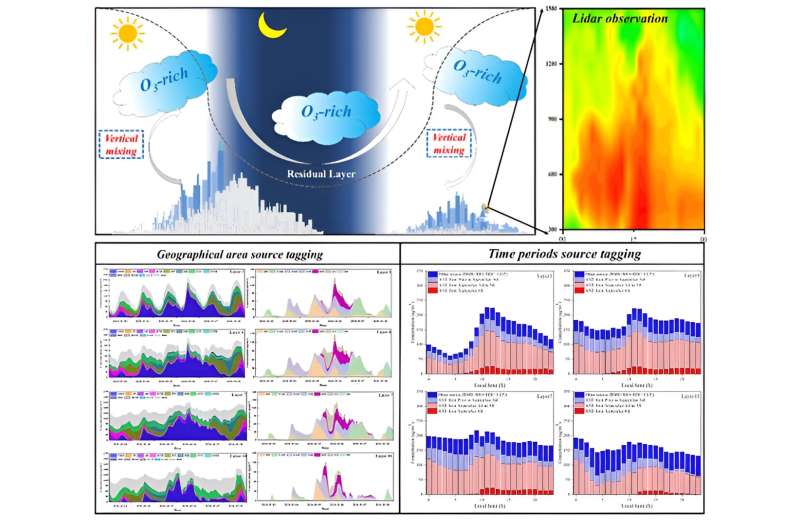This article has been reviewed according to Science X's editorial process and policies. Editors have highlighted the following attributes while ensuring the content's credibility:
fact-checked
peer-reviewed publication
trusted source
proofread
Researchers unveil mechanisms behind ozone pollution in China's Yangtze River Delta

Recently, a research group led by Prof. Xie Pinhua from Hefei lnstitutes of Physical Science (HFIPS), Chinese Academy of Sciences (CAS), revealed the source and transport mechanisms behind an episode of ozone pollution observed in Hefei, a city located in the Yangtze River Delta (YRD) region of China.
The research results, which were published in Science of the Total Environment, offer potential solutions to prevent and control heavy ozone pollution.
The Yangtze River Delta region experiences frequent ozone pollution events during the warm seasons. Synoptic patterns impact the transport and photochemical production of ozone at multiple scales, ranging from the local to regional scale. However, research into the three-dimensional transport characteristics and source attribution of ozone is still limited in the context of extreme ozone pollution events.
In this study, researchers integrated stereoscopic detection techniques with numerical models, focusing on Hefei as the receptor city, to unveil the mechanisms behind an episode of exceptionally high ozone levels.
Based on ozone Lidar observations, O3-rich air masses were transported through the nocturnal residual layer over Hefei on September 5, 2020, and descended to the ground the following day through vertical mixing processes, leading to an extreme ozone peak in Hefei. Numerical model results indicated stagnant meteorological conditions in the Yangtze River Delta region, which hindered the dispersion of pollutants.
Massive photochemical production and accumulation of ozone led to the heavy pollution over Yangtze River Delta region. Initially, O3-rich air masses was transported and converged over the northern Jiangsu under the southeasterly wind. Subsequently, the regional circulation type was changed from southeasterly to northeasterly under the impact of the approaching typhoon, which brought the O3-rich air masses to the upper atmosphere over Hefei.
Ozone source attribution results underscored that the intra-regional contributions from the Yangtze River Delta region dominated the formation of extreme ozone pollution in Hefei during this event.
"Our findings provide insights into the regional ozone transport mechanism in the YRD and optimization of measures to prevent and control heavy ozone pollution on spatiotemporal scales," said Prof. Xie Pinhua.
More information: Feng Hu et al, Integrated analysis of the transport process and source attribution of an extreme ozone pollution event in Hefei at different vertical heights: A case of study, Science of The Total Environment (2023). DOI: 10.1016/j.scitotenv.2023.167237
Journal information: Science of the Total Environment
Provided by Chinese Academy of Sciences





















